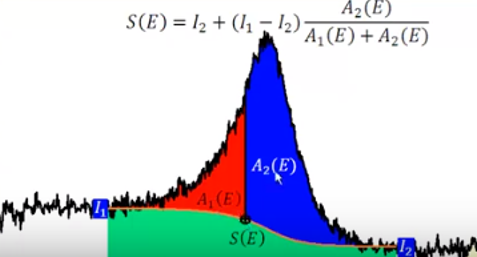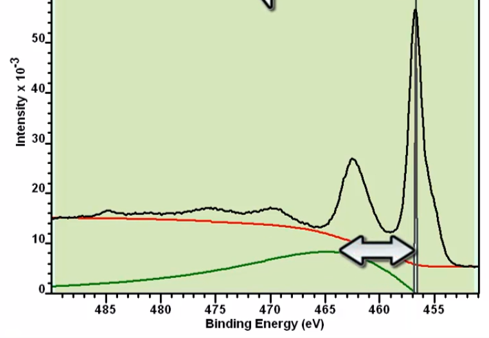XPS for Beginners
- XPS Course Fundamentals
- Data Analysis
- Applications of XPS
- Related Techniques

Following a photoemission we see a large increase in the background level
All core levels and auger peaks contribute to this increased background
What causes this?

Inelastic mean free path (IMFP – λ) defined as the distance travelled by an electron of a given energy between successive collisions
IMFP dependant on material properties (e.g. density, number of valence electrons, band gap)
This process gives XPS it’s surface sensitivity
Following a photoemission process, electrons may undergo inelastic scattering collisions
Inelastic collisions remove kinetic energy from the photoelectron
Spectrometer sees this as a higher effective binding energy
Probability of undergoing an inelastic collision is proportional to the depth at which the photoelectron originated

Roughly one sigma (σ), which is 68%, of all photoelectrons able to reach the vacuum originate within the first λ nm deep
The information depth in XPS is typically defined as 3λ, where this becomes 99.7% of all photoelectrons

Backgrounds are produced by the inelastic scattering of released photoelectrons
Every photoemission peak will contribute to the background
At high binding energies the background is the contribution from all core levels of all elements!

Eventually, we will likely want to be able to develop some fairly complex peak fitting models
But even to develop simple ones, we need to accurately describe the background before we can describe the resulting peak
XPS analysis software (such as CasaXPS) provides a simple method by which to apply dynamic backgrounds to our spectra to model the scattering processes

Most straightforward background
Straight line from A to B
Can be used for simple systems (e.g. polymers) but in most cases linear backgrounds are not sufficient for data analysis

Shirley backgrounds are a background generated based on the proportional ratios of integrated peak area to the high and low binding energy side
Work perfectly for valence bands
Appropriate for vast majority of core spectra – generally recommended for beginners due to the ease of use
Shirley backgrounds reduce asymmetry in peaks
Appropriate lineshapes must be used (to be covered later in this course)

Tougaard backgrounds the most theoretically robust treatment of an XPS spectrum
Used in a number of advanced analytical techniques
Will not be covered in this beginners course